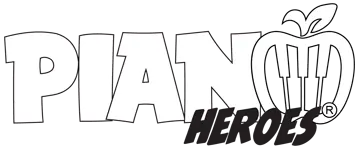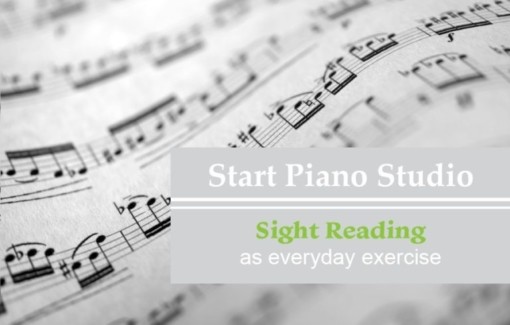Sight-reading often appears to be one of the most important elements of a lesson, hence it must always be included in your lesson. Ear training, rhythm, creativity and play at sight exercises are vital when you are growing into a well-rounded and successful musician. Yet this type of activity is often neglected by many teachers. Even when a student is getting ready for the exam, the sight-reading exercises are not included in the lessons up until the very last few weeks.
As you know it takes regularity and consistency to develop any skill. Developing a steady pulse and rhythm, growing aural awareness and the ability to transform symbols into music has to be the number one priority right from the very first lesson. To prepare the youngest students for successful sight-reading in the future; it is a very good idea to start with the following activities.
Rhythm Exercises:
- Percussive Instruments – are more suitable for younger children and has endless possibilities. Making rhythm, repeating after the teacher, tapping the rhythm of a piece in learning, and composing a rhythm for the teacher (which has shown to be the most loved sight-reading activity among the students).
- Fill-In The Gaps – using cards with rhythmic patterns and missing elements. Students add to the cards and fill in the missing elements after which they clap or tap the rhythm.
- Rhythm Card Game – using different difficulties of rhythm and time signature cards to learn the values of notes and rests, as well as building rhythm patterns.
Ear Training:
- Animal Sound – for the youngest students – make a sound and find the proper register on the piano.
- Let’s Make A Story – question/answer singing on one note game. That is a kind of “ice-breaker” with ear training included. 🙂
- The Sky Is Blue – the student sings a phrase, and the teacher can match his/her singing to a certain key and then ask the student to sing the same phrase from another key.
- Sirens – games for those who have a problem with matching key sounds with their own. Make sounds like an ambulance, police car, or tornado warning and then try to match them with the prearranged notes.
- Guessing Games – Make cards that show music movement – up, down, stays in place and has few mixes. The teacher plays a musical movement from the card that the student chooses (for very beginners). Similar you would have for guessing 1, 2 or 3 notes have been played, and for the major-minor.
Composition:
- Composing melodies to illustrate characters.
- Creating short melodies using middle C, D, E, and F, going up with rhythm long-long-short-short-long.
- Organize one-measure rhythm patterns into musical phrases, combine them with lyrics and add melody.
- Picture composing is a fun way to improvise while the student is not familiar with music literacy. Arranging the pictures of printed-out rain, lightning, and thunder followed by improvisation on white or black keys aid to unwind the freedom of composing.
For the later elementary students, when one has learned notes and has some confidence at the keyboard to a certain extent too, the student can move to play at the sight and melody/rhythm clapback.
Melody playback and Rhythm clapback
Levelled books by B.Berlin and A.Markow for it.
Play at sight:
- The Piano Adventure Sight Reading books, various levels.
- RCM Sight Reading books, various levels.
- Easy piano classics.
- Piano Celebration Series and some others.
The thing to be considered for play at sight first are:
- The key signature, beginning and ending note.
- Time signature/beat count.
- Dynamics and articulation.
- Patterns – look for any specific music/rhythm movement, scales, or intervals.
- Find hand position, notes, which hand when starts, play.
- Choose a “thinking” tempo.
- Play both hands together from the beginning to the end, do not stop to fix an error.
To encourage your students to participate in sight-reading activities, students can be prompted to play their favourite tunes by ear, then the teacher can add harmony to the lesson. Students can also compose their own melodies, write them down and then add time signatures and fix the rhythm errors. By making sight-reading a part of the student’s daily routine, the opportunity for independence grows, allowing the student to be able to play and learn pieces all on their own.
The Piano Heroes method does not neglect sight-reading activities too. Both Mission Adventure and Mission Success series have age and skill-appropriate Sight Reading Activity books.
Would you like to learn more about the art of piano teaching? Stay tuned and subscribe today!


Big thanks to Musical U for referencing our article here
https://www.musical-u.com/learn/sight-reading-vocal-wisdom-computer-creations-and-music-at-a-glance/